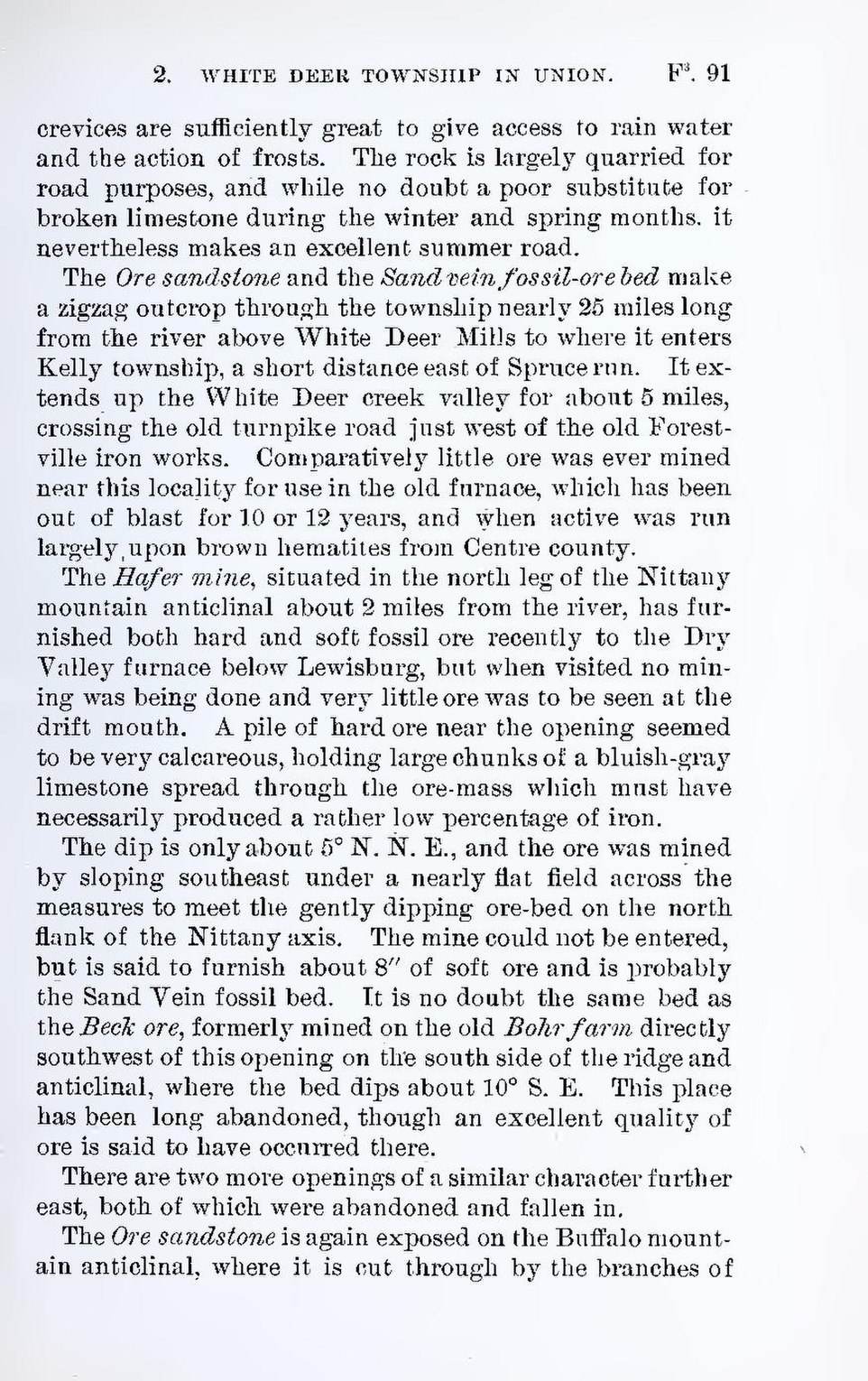crevices are sufficiently great to give access to rain water and the action of frosts. The rock is largely quarried for road purposes, and while no doubt a poor substitute for broken limestone during the winter and spring months, it nevertheless makes an excellent summer road.
The Ore sandstone and the Sand vein fossil-ore bed make a zigzag outcrop through the township nearly 25 miles long from the river above White Deer Mills to where it enters Kelly township, a short distance east of Spruce run. It extends up the White Deer creek valley for about 5 miles, crossing the old turnpike road just west of the old Forestville iron works. Comparatively little ore was ever mined near this locality for use in the old furnace, which has been out of blast for 10 or 12 years, and when active was run largely upon brown hematites from Centre county.
The Hafer mine, situated in the north leg of the Nittany mountain anticlinal about 2 miles from the river, has furnished both hard and soft fossil ore recently to the Dry Valley furnace below Lewisburg, but when visited no mining was being done and very little ore was to be seen at the drift mouth. A pile of hard ore near the opening seemed to be very calcareous, holding large chunks of a bluish-gray limestone spread through the ore-mass which must have necessarily produced a rather low percentage of iron.
The dip is only about 5° N, N. E., and the ore was mined by sloping southeast under a nearly flat field across the measures to meet the gently dipping ore-bed on the north flank of the Nittany axis. The mine could not be entered, but is said to furnish about 8″ of soft ore and is probably the Sand Vein fossil bed. It is no doubt the same bed as the Beck ore, formerly mined on the old Bohr farm directly southwest of this opening on the south side of the ridge and anticlinal, where the bed dips about 10° S. E. This place has been long abandoned, though an excellent quality of ore is said to have occurred there.
There are two more openings of a similar character further east, both of which were abandoned and fallen in.
The Ore sandstone is again exposed on the Buffalo mountain anticlinal, where it is cut through by the branches of
